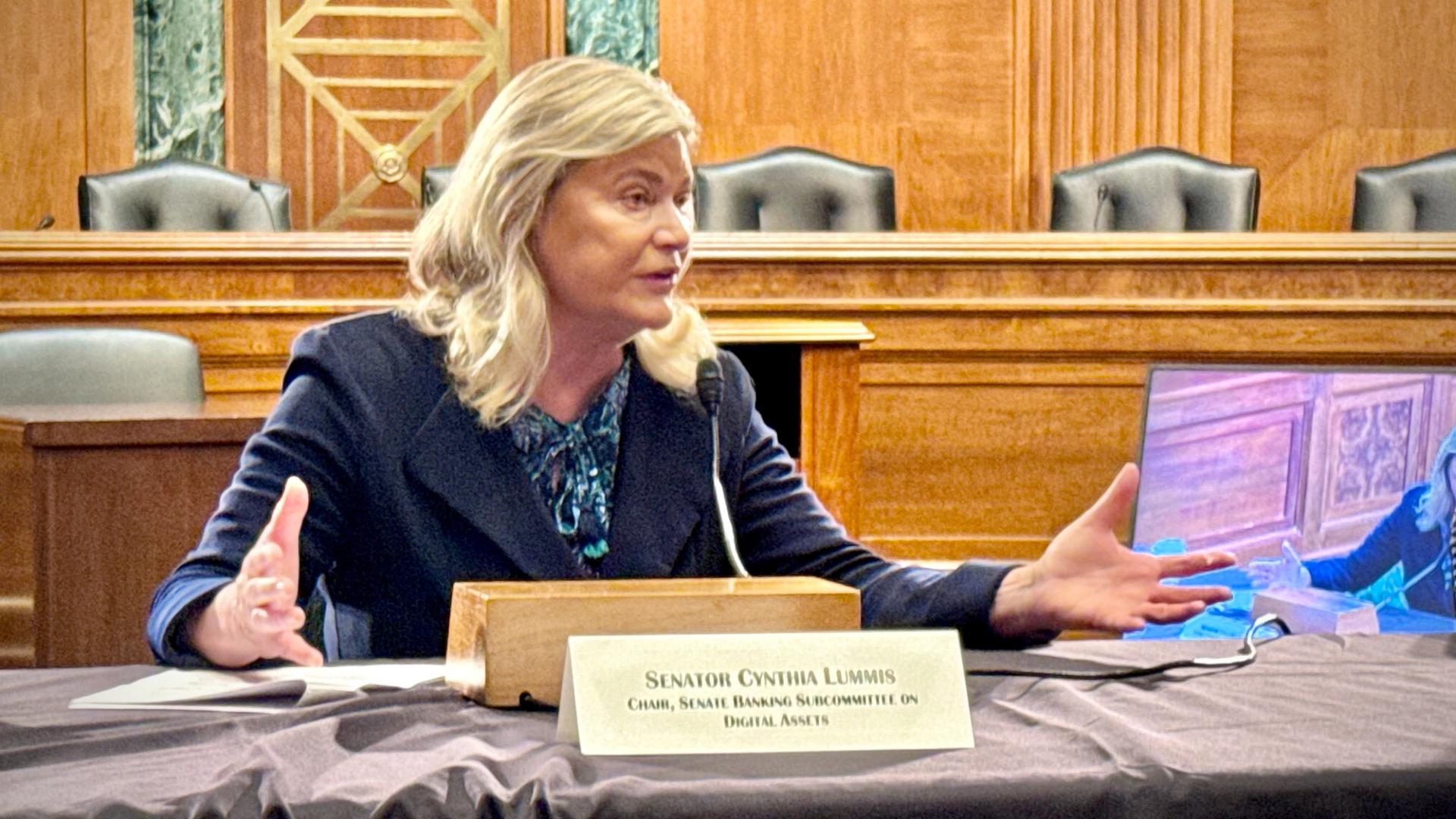Uncategorized
Put Securities On-Chain!

This week, in a Washington Post op-ed, Robinhood CEO Vlad Tenev called for a new approach to capital markets in the United States. He suggested a number of policies – modernizing accredited investor standards is an old favorite among finance wonks – but one stood out. “[T]here needs to exist a security token registration regime, allowing companies to create token offerings that are open to U.S. investors.” Here, Tenev seizes upon the skeleton key to unlock cryptocurrency’s full potential.
Here’s how securities markets work in the United States. By default, companies aren’t really allowed to sell equity at all. The Securities Act of 1933 defines securities and prescribes conditions – and penalties – for selling them. If a company wants to raise money, it hires a lawyer like me and either registers or finds an exemption like Regulation D (Reg D).
Most choose an exemption and go private. And as Tenev points out, many of those choose to stay that way – OpenAI, SpaceX or Stripe. But exempt securities do not trade easily. They’re generally encumbered by contractual and regulatory restrictions that make them illiquid. For the richest few companies, this might be fine – or even the point. But not for most. Without liquid secondary markets, investors can only realize profit through dividends. And where investors cannot realize gains, primary markets run correspondingly dry.
Registered securities, on the other hand, are highly liquid on the secondary market. This means that investors typically jump to participate in an initial public offering. But this process is also restricted to the richest companies by its massive price tag. PwC estimates that even relatively small initial public offerings cost millions of dollars, along with millions more in annual legal fees and compliance. This is still before considering the onerous transparency and forfeiture of control that come with registration. For these reasons now even top firms “avoid going public,” Tenev says.
It’s no secret this is a problem. Washington D.C. recently tried to address it by creating Regulation Crowdfunding (Reg CF) in the 2012 JOBS Act. The idea was to make exempt securities more accessible to small and medium businesses (SMBs), but they just couldn’t help themselves. Familiar restrictions on secondary liquidity hamstring the program. Combined with still-significant compliance costs, the result will never be a meaningful segment of U.S. capital markets.
Instead, the solution came from outside. Ethereum developers introduced the ERC-20 standard in 2015, allowing anyone to create an arbitrary number of tokens and sell them into instant liquidity. Project founders could restrict resale as they chose. But, in practice, the best projects developed deep, efficient markets quickly. These fungible tokens took various names and functions, but practically, for a time, they were the internet’s capital market.
On top of secure, trustless blockchain technology, the crucial breakthrough was just letting people buy and sell tokens freely. It turns out this is a product people really want, and initial coin offerings grew 100X between Q1 and Q4 of 2017.
This halcyon moment couldn’t last – wholly unregulated markets were a sink for scams, and the subsequent SEC campaign to end cryptocurrency fundraising is well documented. These days, it is extremely difficult to make a legal primary token sale in the U.S. Projects are left to give tokens away for free. Even then, a single successful Hyperliquid airdrop created more value in a day than all Reg CF offerings from 2021 to 2023 combined.
Rather than gesture to the past, though, Tenev emphasizes the future:
“Tokenizing private-company stock would enable retail investors to invest in leading companies early in their life cycles…enabling them to draw additional capital by tapping into a global crypto retail market… [It] would [ ] provide an alternative path to the traditional IPO[.]”
He calls this “tokenized real-world assets.” I call it a regulatory third way. Sitting between exempt securities and public offerings, the SEC should promulgate rules that allow projects to sell securities in the form of cryptocurrency tokens with limited compliance and disclosures – combining the relative simplicity of a private placement with the secondary liquidity of a public offering.
We already know the first-order effects of such a system. In 2017 and 2018 more than 2,000 projects sold tokens to raise over $13 billion. As Tenev points out, “the risks are highest where the opportunity for upside is greatest” and many of those early crypto companies failed. Many survived, though, and are still building today. Early investors grew rich, and their leaders remain faces of the industry.
The second-order effects are where the real value accrues. Compared to any traditional securities offering, cryptocurrency token launches are trivially cheap. By some estimates, there is as much as a trillion dollars of potential SMB capital demand in the United States. This suggests vast potential for on-chain fundraising. Nobody knows what access to this capital would mean – some would no-doubt be vaporized – but there is real potential that underserved markets experience asymmetric growth.
Of course, there are risks beyond lost investments, too. A liberalized cryptocurrency regime might displace some or all of the current public securities regime. This would, in effect, radically decrease the compliance and disclosure requirements for public companies, possibly undermining market efficiency and increasing deceit.
But why anchor to the status quo? A third-way regime can require disclosures without being as onerous as public registration. Consumer protection need not arise from laws that were written before running water was ubiquitous – much less cryptographically secure blockchain networks.
It’s not obvious that public securities would vanish anyway. The relative cost of compliance diminishes at scale. For mature companies, investors will probably demand traditional disclosures and be willing to pay a corresponding premium in exchange. If they don’t, maybe these laws’ time has come.
It’s hard to imagine anyone arriving at the contemporary regime from first principles. The president can launch a memecoin, but tokens tethered to business fundamentals are prima facie illegal. So, here I second what Tenev says, “It’s time to update our conversation about crypto from bitcoin and memecoins to what blockchain is really making possible.” Let’s put securities on-chain.
Uncategorized
Senator Seeks to Waive U.S. Taxes on Small-Scale Crypto Activity in Big Budget Bill

U.S. Senator Cynthia Lummis is seeking to slip a significant crypto tax measure into the massive budget bill that backs much of President Donald Trump’s agenda, trying to reduce tax consequences stemming from fundamental cryptocurrency activities.
Lummis sought on Monday to insert language into Congress’ «Big Beautiful Bill» that would, among other things, waive taxes on small crypto transactions below $300 and would — in the industry’s view — rationalize a tax approach that currently has people hit for taxes on both the front end and back end of activity at the heart of the sector’s inner workings: staking and digital assets mining.
The idea of making small transactions tax-free (capped at $5,000 in overall transactions each year) would eliminate much of the burden of working out capital gains for people who only engage in a small amount of digital assets activity. That could clear a lot of headaches for those who’ve been hesitant to try crypto, the industry contends.
The amendment pushed by Lummis, which hasn’t yet come up for a vote, also addresses tax issues with crypto lending, wash sales and charitable contributions.
As the Digital Chamber put it on Monday, the move on mining, staking and other ways of gaining crypto assets would repair «a long overdue mistake on how these rewards are treated for tax purposes.»»Today, staking and block rewards are taxed upon both acquisition and point of sale,» the U.S. crypto lobbying group argued, pushing its constituents to petition Congress for support. «Senator Lummis’ provision solves this by taxing rewards only when sold, aligning policy with actual income.»
So-called validators in a blockchain are given rewards for staking their assets, providing them a return for otherwise locking up their cryptocurrency. It’s taxed when they receive the rewards and on the gains when they sell those assets. Industry critics of this approach are pushing for the change to a system that would instead tax the assets only upon their eventual sale.
Crypto mining works in much the same way, with assets created in the digital mining process and then later sold. Assets gained from aidrops and forks would also get the same treatment under Lummis’ amendment, getting taxed only when they’re ultimately sold.
The amendment might also address the wash-trading loophole lawmakers have sought for years to close. Under current rules, crypto investors can conduct a «tax-loss harvesting» strategy through strategically selling investments at a loss and immediately re-purchasing them.
The hard-fought Senate process has been going through an unlimited amendment process known as a «vote-a-rama» which began Monday morning, and Lummis sought to toss this amendment into the mix. The stakes are high for congressional Republicans on the wide-reaching bill, but party leaders have struggled to keep all of their members in the yes column as Democrats unite against it, taking issue with potential cuts to Medicaid, green energy initiatives and other aspects of the nearly 1,000-page legislation.
The U.S. House of Representatives barely passed its own version of the spending bill last month, and it would have to do so again if the Senate approves it with changes. Analysis of the measure concluded its provisions could add more than $3 trillion to the U.S. budget deficit.
UPDATE (July 1, 2025, 00:35 UTC): Adds tweet.
Uncategorized
ETH Price Surges as $2.9B Inflows, EthCC, and Robinhood’s L2 Fuel Bullish Sentiment

Ether (ETH) 3.5% in the past 24 hours to $2,519 as of 18:59 UTC on June 30, according to CoinDesk Research’s technical analysis model, supported by continued institutional demand, network upgrades, and major retail platform integrations.
Institutional interest remains robust, with CoinShares reporting $429 million in net inflows into ether investment products over the past week and nearly $2.9 billion year-to-date. This trend has coincided with a declining ETH supply on exchanges and rising staking levels, with over 35 million ETH —a round 28% of the total supply — now locked in proof-of-stake contracts. Market analysts suggest that these factors are reducing liquid supply and bolstering ether’s long-term investment thesis.
Robinhood announced on Monday that it is developing its own Layer-2 blockchain using Arbitrum’s rollup infrastructure. The network is not yet live, but the initiative will eventually support Ethereum staking, tokenized stock trading, and perpetual crypto futures. Although the L2 is under development, the decision to build it on Ethereum’s rollup ecosystem is seen as a long-term vote of confidence in Ethereum’s scalability roadmap.
Ethereum co-founder Vitalik Buterin has also introduced a new digital identity framework using zero-knowledge proofs. This system allows users to verify traits or credentials without revealing private data and is designed to help Web3 apps incorporate privacy-preserving identity systems. Analysts view this as a key step toward wider adoption of decentralized applications requiring sensitive user authentication.
Meanwhile, the Ethereum Community Conference (EthCC) kicked off in Cannes, France, gathering more than 6,400 attendees and 500 speakers. The event showcases Ethereum’s ongoing developer momentum through presentations on new tools, scaling strategies, and protocol improvements.
Despite the positive momentum, ETH remains just below its 200-day moving average, suggesting technical barriers still exist. However, the confluence of inflows, developer progress, and scaling plans continues to support a constructive outlook.
Technical Analysis Highlights
- Ether traded between $2,438.50 and $2,523 from June 29 19:00 to June 30 18:00, marking a 3.47% range.
- The largest spike occurred during the 22:00–23:00 UTC window on June 29, when ETH surged 2.9% on volume of 368,292 ETH, briefly pushing through the $2,500 barrier.
- On June 30 at 15:00 UTC, ETH found strong support around $2,438 on above-average volume, confirming a bullish floor.
- A local high of $2,523 was reached earlier in the day, establishing resistance just above the psychological $2,500 level.
- During the final hour from 18:00 to 18:59 UTC on June 30, ETH retraced from an intraday peak of $2,499.19 to close at $2,487.19.
- A sharp upward move between 18:20–18:21 saw ETH climb 1.6% on 6,318 ETH volume, stalling near $2,499.
- As of 20:23 UTC on June 30, ETH traded at $2,519, up 3.49% in 24 hours, signaling renewed bullish momentum into the Asia open.
Disclaimer: Parts of this article were generated with the assistance from AI tools and reviewed by our editorial team to ensure accuracy and adherence to our standards. For more information, see CoinDesk’s full AI Policy.
Uncategorized
Circle Applies for National Trust Bank Charter

Circle (CRCL), the company behind the USDC stablecoin, said Monday it has filed an application with the Office of the Comptroller of the Currency to form a federally regulated national trust bank.
A federal trust charter would bring Circle under direct OCC oversight, aligning it with how traditional financial institutions are regulated. If approved, the new entity, which would be called First National Digital Currency Bank, N.A. would oversee custody of USDC reserves and offer services tailored to institutions. If approved, Circle would join the ranks of federally chartered institutions like Paxos and Anchorage, both of which previously secured trust bank status to offer crypto-related services nationwide.
The trust bank status would allow Circle to operate across state lines without obtaining separate licenses in each state — a hurdle that has complicated expansion for many digital asset companies. It would also permit Circle to offer regulated digital asset custody services to institutional customers.
The move signals a strategic effort by Circle to solidify its regulatory standing as the U.S. mulls legislation like the GENIUS Act, which would create new guardrails for dollar-backed stablecoins. The company said becoming a national trust bank would help it meet anticipated requirements under the bill, which passed through the Senate earlier this month and now awaits a vote in the House of Representatives.
«By applying for a national trust charter, Circle is taking proactive steps to further strengthen our USDC infrastructure,» Circle CEO Jeremy Allaire said in a statement. «We will align with emerging U.S. regulation for the issuance and operation of dollar-denominated payment stablecoins, which we believe can enhance the reach and resilience of the U.S. dollar, and support the development of crucial, market neutral infrastructure for the world’s leading institutions to build on.”
Circle went public last month and issues the world’s second-largest stablecoin, USDC, and the leading euro-pegged token EURC.
The OCC, which oversees national banks and federal savings associations, must still review and approve Circle’s application. The agency has granted similar charters to a handful of crypto firms in recent years, signaling growing regulatory acceptance of digital asset companies operating within the traditional banking framework.
UPDATE (June 30, 2025, 20:50 UTC): Adds additional information.
-

 Business9 месяцев ago
Business9 месяцев ago3 Ways to make your business presentation more relatable
-

 Entertainment9 месяцев ago
Entertainment9 месяцев ago10 Artists who retired from music and made a comeback
-

 Fashion9 месяцев ago
Fashion9 месяцев agoAccording to Dior Couture, this taboo fashion accessory is back
-

 Entertainment9 месяцев ago
Entertainment9 месяцев ago\’Better Call Saul\’ has been renewed for a fourth season
-

 Business9 месяцев ago
Business9 месяцев ago15 Habits that could be hurting your business relationships
-

 Entertainment9 месяцев ago
Entertainment9 месяцев agoDisney\’s live-action Aladdin finally finds its stars
-

 Entertainment9 месяцев ago
Entertainment9 месяцев agoNew Season 8 Walking Dead trailer flashes forward in time
-

 Tech9 месяцев ago
Tech9 месяцев ago5 Crowdfunded products that actually delivered on the hype






Binance账户
2 марта, 2025 at 10:49 дп
Your article helped me a lot, is there any more related content? Thanks! https://accounts.binance.com/en-IN/register-person?ref=UM6SMJM3